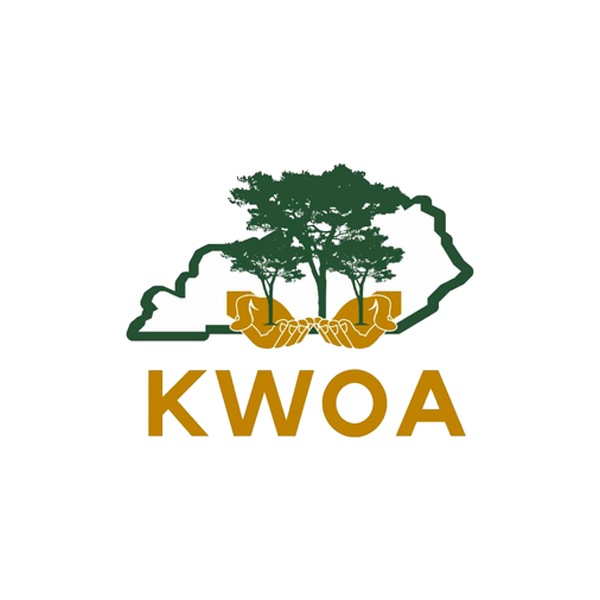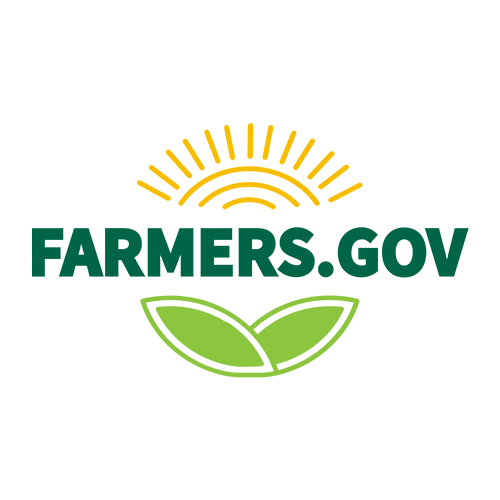
Veatch Farms were the 2023 Leopold Conservation Award Winners!
Farmers Celebrate Earth Day Every Day
Earth Day, observed annually on April 22nd, is a global event that brings together individuals, communities, and organizations to demonstrate their commitment to environmental protection and sustainability. As stewards of the land, farmers play a crucial role in preserving the environment and supporting the Earth Day ethos. Farmers continue to adopt various sustainable practices to celebrate Earth Day that help the environment and benefit their livelihood.
Regenerative Agriculture
Regenerative agriculture is an innovative farming approach that focuses on restoring soil health, enhancing biodiversity, and reducing the negative impacts of agriculture on the environment. Regenerative practices like no-till farming, cover cropping, rotational grazing, and agroforestry improve soil health, reduce erosion, and increase carbon sequestration. These methods enhance the land's resilience to climate change while providing long-term benefits for farmers through higher yields and reduced input costs. Kentucky’s agricultural research institutions constantly look at ways to improve production through more natural methods to improve farm profitability.
Biodiversity
Farmers promote biodiversity on their farms by creating habitats for various plant and animal species. Establishing hedgerows, field margins, and wildflower meadows encourages pollinators and beneficial insects, which help control pests and improve crop yields. Additionally, integrating livestock into crop rotations or maintaining mixed-use landscapes with woodland and wetland areas support a diverse array of species, making farms more resilient to environmental stressors.
Conserving & Protecting Water
Water is a precious resource, and its efficient use is vital for sustainable agriculture. Farmers implement water-saving techniques such as drip irrigation, rainwater harvesting, and mulching. These practices help to reduce water wastage, lower irrigation costs, and enhance soil moisture retention. Furthermore, farmers can utilize soil moisture sensors and weather-based irrigation scheduling to optimize water use and minimize runoff.
The Kentucky General Assembly passed the Kentucky AGRICULTURAL WATER QUALITY ACT in 1994 to protect surface and groundwater resources from pollution due to agriculture and forestry activities. The Agricultural Water Quality Act requires all farmers and foresters using 10 or more acres for production to develop and implement a water quality plan using best management practices. Those practices include rotational grazing, planting permanent crops and trees near streams, and managing chemicals well.
Embracing Renewable Energy
Many farmers use renewable energy sources to reduce their environmental impact and cut energy costs, or they may update their equipment to conserve energy use. The On-Farm Energy Efficiency Incentive program through Kentucky Agricultural Development Fund provides a cost-share on eligible equipment and technologies such as more energy-efficient grain drying systems, poultry housing, irrigation, and dairy operations. Farmers may also install solar or biomass-powered equipment.
Sharing Knowledge and Collaborating
One of the best ways for farmers to improve sustainability is by sharing their knowledge and experiences with other farmers and learning from one another. Participating in local, national, or global networks, such as conservation districts, farmer cooperatives, extension programs, or online forums, can help farmers exchange ideas, gain new insights, and stay updated on the latest advancements in sustainable agriculture. Collaboration is critical to driving positive change and fostering a more sustainable future for all.
Sharing Their Conservation Stories
Farmers can spread awareness about the importance of sustainable agriculture by hosting events on their farms. Open farm days, workshops, and farm-to-table dinners offer opportunities for the public to learn about sustainable farming practices and experience farm life firsthand. By engaging with the community, farmers can inspire others to adopt sustainable habits and foster a deeper appreciation for the environment.
The Leopold Conservation Award Program is another excellent way that farmers’ efforts can be recognized and shared with their communities. Farms engaging in outstanding conservation practices have been recognized in Kentucky since 2013.
Earth Day is an excellent opportunity for farmers to reaffirm their commitment to protecting the environment and promoting sustainable agriculture while further cementing their livelihoods through collaboration and education.
Where to Go for Assistance
AFT created the conservation agriculture movement, which speaks for the land—and for the people who grow our food. As the movement’s leaders, we have three priorities: protecting agricultural land, promoting environmentally sound farming practices, and keeping farmers on the land.
The KACD is a private, grass-roots organization made up of the governing bodies of Kentucky's 121 Conservation District Board of Supervisors, or 847 Supervisors. It is also composed of some 30 Watershed Conservancy Districts Board of Directors or between 150 and 200 Directors.
KWOA is interested in resource conservation, sustainable timber production, fish and wildlife management, and recreation. Woodland ownership ranges from those with several acres to those with more than a thousand.
The Organic Association of Kentucky (OAK) is a nonprofit organization founded by farmers, for farmers. OAK works to advance organic regenerative agriculture, to improve the health of the environment and our communities. Growing ecological resilience, economic viability and socially just futures for Kentucky farmers through educational, technical and market resources. We believe that organic agriculture improves environmental resilience and conservation, nurtures human and community health and is a powerful driver of regional prosperity.
Kentucky Farm Bureau (KFB) has announced the launch of its new Kentucky Farmland Transition Initiative (KFTI). The KFTI is a strategic project focused on helping farm families find ways to keep their acreage in active agricultural production as they consider the future of that land.
Connect with the USDA and its local service offices: Farm Service Agency, Natural Resources Conservation Service, and Rural Development. Apply for loans, learn about disaster assistance, and start your farm.
The White Oak Initiative is a diverse coalition of partners committed to the long-term sustainability of America’s White Oak forests as well as the economic, social, and environmental benefits they provide.
To encourage the preservation of agricultural land across the state, the Kentucky General Assembly established the Purchase of Agricultural Conservation Easement (PACE)Corporation in 1994.
Latest News & Articles
Farmers like the Jones Brothers and Hines constantly explore new ways to be efficient from a production standpoint, as well as being conservation-minded.
Establishing buffer strips, crop rotations, no-till practices, and cover crops have reduced soil erosion and improved water quality at their beef cattle and grain farm. Selective harvesting and thinning overgrowth promote the quality of timber in the farm’s 125 acres of forests. Planting trees and native grasses has created a habitat for wildlife and insect pollinators.
For decades, environmental experts, government agencies, and concerned citizen groups have been hearing about and monitoring an area in the Gulf of Mexico that has come to be known as the Hypoxia Zone.
In 2014, the Kentucky General Assembly passed HB 448- an act relating to destruction of crops on farms by wildlife. This bill allowed landowners to kill or trap on their lands any wildlife causing damage to the lands or personal property without a tag.
Along the rivers that snake across the Commonwealth, you’ll find a University of Kentucky researcher taking samples to study the health of the water flowing through the state.
In the 60 years since the first commercial no-tillage planting in Christian County, the agricultural practice continues to improve soils and water quality on millions of acres across Kentucky, the United States and the world.
Farming land his grandmother once owned, Fred L. Sipes says he’s a caretaker of a precious resource. Fred began growing 50 acres of burley tobacco, fresh out of high school in 1994. Even then, conservation was important to him. He knew consistent improvement and diversification would be critical to his farm’s survival.
As Barry Alexander drives a tractor across a soybean field on Cundiff Farms, his eyes are on a computer screen that shows his precise location, the speed of the tractor, exactly how much seed is being planted per acre and more. He can watch the screen closely because the tractor uses autosteer to move across the field in a straight line.
When you hear the words “firewood operation,” you may envision large, desolate sections of land absent of hickory, oak, and maple trees. That’s not the case here. As Reed looks over a tract of land they farmed for firewood in recent years, he bends down to point out oak and maple saplings flourishing on the forest floor.
There has been much attention on how animal agriculture affects the environment, and many in high places are encouraging meat-outs and drastic changes to food production methods. But the agriculture industry is constantly evolving.
When farmers think of leaders in regenerative agriculture, they may not think of a farm tucked away in Carlisle County, Kentucky, or a family that has been tending the land since the Civil War. But after just a few minutes of visiting with Brad Reddick and his son, Joel, it’s easy to see that these men eat, sleep, and breathe soil health.
An idea that started with the curiosity of an enterprising south-central Kentucky farmer is showing promise as another crop for Kentucky small grain producers, as well as a reliable source of Kentucky-grown cereal rye for bourbon distillers, bakers and millers.
Mr. Warren Beeler discusses how Kentucky farmers are more sustainable than ever.
James R. “Buddy” Smith has been farming in the Bluegrass Region for more than 50 years. He is the 2020 Kentucky Leopold Conservation Award winner.
A land ethic was instilled in Mark Turner at a young age while helping his father on the family farm. When Mark took over Turner Farms, he saw the negative effects from the moldboard plow to the land. He decided to purchase a no-till drill in 1983. The farm now practices no-till and plants cover crops on every acre.
Nearly 1,330 acres of the property has a long history of logger choice harvest and occasional wildfire. This left mostly small-to-medium saw timber with a large percentage of low quality, less desirable species. The family has been working to improve timber quality through cull tree removal and mid-story removal for regeneration.
Achieving soil health through the use of no-till farming and cover crops is nothing new to Edward (Myrel) Trunnell, who began farming more than six decades ago. Conservation is synonymous with his idea of farming.
In the five decades since he took the reins of his family farm, he has improved the health of thousands of highly-sensitive acres along the Green River. Successful farming and conservation along one of North America’s most ecologically-important river corridors required an ability to adapt, experiment and innovate.
Jerry and Valarie live and farm on the first piece of land they bought together in 1967. By purchasing other farms, their Springhill Farms operation has grown to nearly 1600 acres of cropland, with 200 additional acres of unplanted land, and 300 acres of rented farmland.
Todd Clark is a first generation farmer in Lexington. He began helping a neighbor farmer as a young teenager and had his first tobacco crop at age 16. By the time Todd was 18, he was leasing a house and land and had branched out to cattle and hay operations.
The history of Old Homeplace Farm in southeastern Kentucky dates back to the mid 1800s. No written record exists of the family’s crops or livestock, but we imagine that it was like most other Kentucky farms of that period: highly diversified and remarkably self-sufficient.
Farming and caring for the land has been the vocation and passion of the Halcomb Family for many generations. From settling of the Home Farm in the 1830s to the present day, each generation has embraced this opportunity and responsibility.































